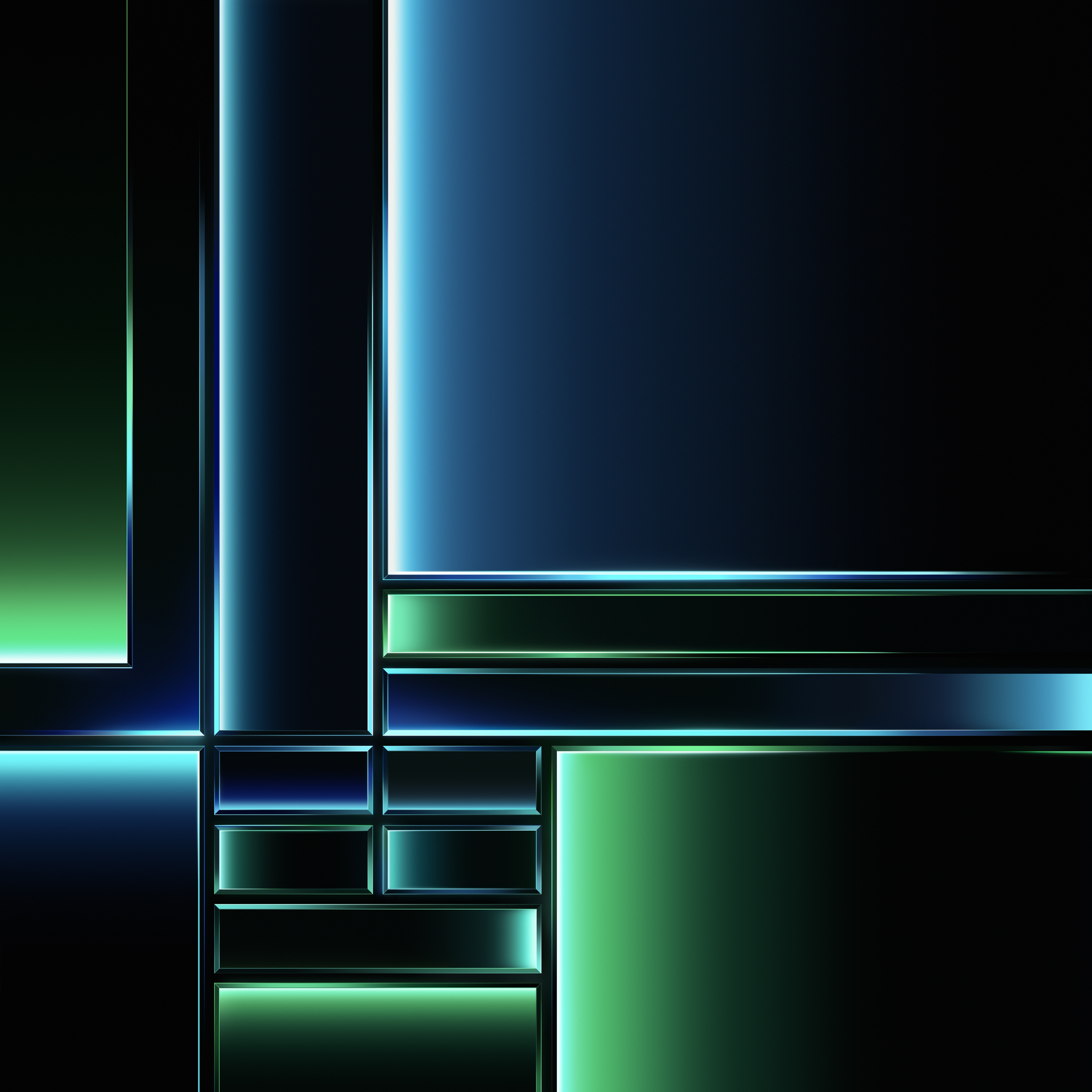-
Posts
2,353 -
Joined
-
Days Won
34
Content Type
Profiles
Forums
Events
Everything posted by Aaron44126
-
.thumb.png.e841bc17c8cca329ac53db7523663d9a.png)
Precision M6800 questions and upgrades
Aaron44126 replied to Jers6410's topic in Pro Max & Precision Mobile Workstation
Oh, I don't know which specific GPUs are impacted or not impacted since I've only ever worried about NVIDIA, but I saw enough posts on the matter over at NBR to know that having the fans fail to kick on for newer "unsupported" AMD GPUs is a known/common thing in these systems. Don't take for granted that it will "just work". -
.thumb.png.e841bc17c8cca329ac53db7523663d9a.png)
Is Apple finally taking gaming on macOS seriously?
Aaron44126 replied to saturnotaku's topic in Other Manufacturers
Nice. Like I’ve been saying, there are obviously issues with these things “as a PC” (lack of upgradeability, high SSD prices, software compatibility issues, not-quite-ideal keyboard layout that I’m still getting used to, etc.) but “as a laptop” it really offers an experience that can’t be beat by a Windows system. The only times I have heard the fans in my M2 Max 16” are when running benchmarks or demanding 3D games. Gaming with ANC headphones makes it a non-issue (even though I think the fans are quieter than my Precisions were). They never make a peep in other workloads I have tried, including moderate ones like doing photo work in Lightroom or coding in Visual Studio. I now have a Windows and a Linux VM running at all times but that hasn’t done anything to wreck the silence or great battery life. I did upgrade to macOS Sonoma recently but I haven’t had time to mess with D3DMetal gaming much yet, other than to confirm that it “works” by launching a couple of titles. I am encouraged by Apple’s apparent silent cooperation with CodeWeavers (GPTK 1.1 was available in a CrossOver 23.7 beta a few days before it showed up on the Apple developer web site, so there clearly is some side communication going on between them).- 42 replies
-
- 1
-

-
Very interested to see what this turns out being like… I really hope they do something about the keyboard at least. My work Precision 7560 will be due for a refresh next summer and my workplace is eyeing a switch to Lenovo. So not yet sure if I will end up with a “7690”, a Lenovo P-something, or another MacBook.
-
.thumb.png.e841bc17c8cca329ac53db7523663d9a.png)
Is Apple finally taking gaming on macOS seriously?
Aaron44126 replied to saturnotaku's topic in Other Manufacturers
First off, Apple’s recent RAM claims of things like 8gb being like a 16gb Windows laptop are indeed ridiculous. But don’t underestimate the potential of the unified memory. It allows for absurd GPU/VRAM utilization on high-end systems that you can’t get on a laptop otherwise. Unusual GPU workloads like simulations, AI model build, or crypto mining could benefit from having 10’s of GBs available to the GPU.- 42 replies
-
.thumb.png.e841bc17c8cca329ac53db7523663d9a.png)
P3200 Compatibility with M6800?
Aaron44126 replied to triggy's topic in Pro Max & Precision Mobile Workstation
The one that says 980M (not “mobile”). The other one is a desktop 980 in mobile form factor; the only time NVIDIA really did that for a high-end card, as far as I know. As you can see, the card is not a standard shape. It would be a challenge to use it. (It might even need an extra power hookup? I don’t remember.)- 13 replies
-
- gpu upgrade
- dell precision m6800
-
(and 1 more)
Tagged with:
-
.thumb.png.e841bc17c8cca329ac53db7523663d9a.png)
P3200 Compatibility with M6800?
Aaron44126 replied to triggy's topic in Pro Max & Precision Mobile Workstation
You'll have to check what kind of drive you have. That will work for SATA M.2 drives, but not for NVMe M.2 drives (...which are far more common). You can't connect an NVMe drive to a SATA port with an adapter. M6800 only supports SATA. To get an NVMe drive to work you'd have to attach it with an adapter to an internal PCIe slot like the WWAN slot, and there isn't a whole lot of room. Fitting a 2280-size drive would require mods if it is even possible. And you wouldn't be able to boot from it regardless.- 13 replies
-
- gpu upgrade
- dell precision m6800
-
(and 1 more)
Tagged with:
-
.thumb.png.e841bc17c8cca329ac53db7523663d9a.png)
P3200 Compatibility with M6800?
Aaron44126 replied to triggy's topic in Pro Max & Precision Mobile Workstation
For the first point, yes you are understanding it right. Except I think that it is more like the Dell BIOS is borked but somehow "happens to work" with other GPUs and only these Pascal VBIOS are exposing the problem. Regarding the P3200 and EEPROM to store the VBIOS, I think this is dependent on where the P3200 is sourced from. HP tends to do this with many GPUs, storing the VBIOS on a chip on the motherboard rather on the GPU card, but I haven't heard of any other laptop maker doing that. But yes, even to work with Linux, the GPU would need a VBIOS. Are you stuck with a P3200? You'd probably have an easier time with a first-gen Pascal Quadro card (P3000/P4000/P5000), or maybe even Quadro M5000M / GeForce 980M which is probably the easiest upgrade to do in this laptop.- 13 replies
-
- gpu upgrade
- dell precision m6800
-
(and 1 more)
Tagged with:
-
.thumb.png.e841bc17c8cca329ac53db7523663d9a.png)
P3200 Compatibility with M6800?
Aaron44126 replied to triggy's topic in Pro Max & Precision Mobile Workstation
The problem is that there is no known "engineering sample" vBIOS that works with the P3200. We only have such vBIOS images for P3000, P4000, and P5000. (If there was, you could flash it under Linux using nvflash. No need for extra hardware.) The issue with Windows is it hits some bug with the BIOS ACPI tables that is triggered when you install one of these Pascal GPUs. Windows is unable to get around it and crashes with a BSOD. Linux doesn't care. (There is a great thread by @jeamn on this issue but it was done at NotebookReview. I'll see if I can dig it up later.) You can indeed run Windows in a VM under Linux with direct hardware access to the GPU, @jeamn also did that successfully with a GeForce 1070. I think then you need to have Optimus enabled and an external display though because you won't be able to "see" the GPU's output on the internal display. [Edit] Here it is -- https://www.nbrchive.net/forum.notebookreview.com/threads/trials-and-tribulations-installing-a-1070-in-a-m6800.828000/index.html- 13 replies
-
- gpu upgrade
- dell precision m6800
-
(and 1 more)
Tagged with:
-
.thumb.png.e841bc17c8cca329ac53db7523663d9a.png)
P3200 Compatibility with M6800?
Aaron44126 replied to triggy's topic in Pro Max & Precision Mobile Workstation
AFAIK, there is no way to get P3200 working with Windows without resorting to pretty ridiculous BIOS shenanigans (you'd have to inject something early in the boot process to change the ACPI tables or some such; @jeamn did this at one point to get a GeForce 1070 booting). You should however be able to use it with Linux with no issue. And these days, running most Windows games on Linux is pretty straight-forward with either Steam+Proton, Lutris, or plain old Wine. You might not need a Windows install at all if that is your only use case. Yes, any NVIDIA GPU that is Maxwell or Pascal will likely need a minor heatsink mod to have it fit. You'll need a dremel or similar tool to cut a little piece off of the GPU-card-side of the heatsink. It hits the VRMs at the "top", which are in a slightly different position than they were for Kepler cards, and will be pretty obvious when you try to put the heatsink on. This is assuming that your M6800 came with an NVIDIA GPU. If it came with an AMD GPU, you'll want to source the NVIDIA version of the heatsink as well.- 13 replies
-
- 1
-

-
- gpu upgrade
- dell precision m6800
-
(and 1 more)
Tagged with:
-
Microsoft is going to let Windows users use a default search provider other than Bing, not just in the browser, but in places like the Start Menu search. ............Only if you live in Europe (or set your PC's region accordingly at initial setup), because the EU's DMA is forcing them to make this change. They already have a similar commitment to allow you to use a browser other than Edge, which also only applies in Europe. https://www.theverge.com/2023/11/16/23963579/microsoft-windows-11-eu-digital-markets-act-feature-changes
-
.thumb.png.e841bc17c8cca329ac53db7523663d9a.png)
Finally. Microsoft incorporates iOS into phone link.
Aaron44126 replied to kojack's topic in Mobile Devices & Gadgets
Err. Here's a new thing. https://www.macrumors.com/2023/11/16/apple-to-adopt-rcs-messaging-standard/ After years of prodding, Apple is adopting RCS "later next year" (sounds like an iOS 18 feature) which will improve the messaging experience between Apple and Android devices. -
.thumb.png.e841bc17c8cca329ac53db7523663d9a.png)
14th Gen Desktop replacement Laptops?
Aaron44126 replied to Snowleopard's topic in What Laptop Should I Buy?
Agreed. I don't even know of a 13th-gen system that meets this. The DTR market as we used to know it seems to be dead. You can find a small number of systems with 4 NVMe slots but I've never heard of one with more than that. You might be able to squeeze in one more small one (not bootable) if you repurpose a WWAN slot with an adapter. Four SODIMMs is also becoming uncommon as well (and right now that maxes out at 192 GB) and CAMM or soldered memory will probably take over as high DDR5 speeds start causing signaling issues on SODIMM slots. And, 4K display (or the taller 16:10 variant of it) is the max resolution that I have heard of in a laptop display. -
.thumb.png.e841bc17c8cca329ac53db7523663d9a.png)
Dell Fan Management — Software for controlling the Dell laptop fan speed
Aaron44126 replied to Aaron44126's topic in Dell
You have to use a command prompt (running "as administrator") to enter these commands for DellFanCmd. It is not a GUI application so it won't do anything if you just click on it. You can test if SpeedFan can control the fans properly by just manually setting the PWM in the main window. It should react differently if you set it to 0, 50, or 100. (It will not allow for more granular control of the fans than that, it is limited to the same three speeds as my app.) Automatic EC fan control does have to be disabled in order for SpeedFan to be able to do anything, and also you must activate a checkbox setting in SpeedFan configuration that says something about supporting Dell fans. -
As @Kitje said, you can swap out the keyboards (backlit/non-backlit); the system will figure out which one you have and react accordingly.
-
On my Precision 7560, I cannot use a drive in the primary drive slot (in the middle of the system). It is not stable, it disappears after a period of time, which will result in either a crash or lock-up if it is the system drive or the drive vanishing if it is not. It might come back after a reboot or it might not. I've had the motherboard replaced twice but the issue returned each time. (My current motherboard does not have the little push-button switch beneath the drive slot which was originally thought to be the cause of this.) I've been just getting by without using that slot. So. What @Rinconmike said. Put it in a different slot and see.
-
.thumb.png.e841bc17c8cca329ac53db7523663d9a.png)
No 'Apple' section in Notebook Manufacturers subforum?
Aaron44126 replied to serpro69's topic in Site Suggestions
Will be interested to see. Just because it is an ARM CPU doesn't mean it is automatically "great" in terms of efficiency and performance, though I imagine it isn't too hard to beat x86 for efficiency. Apple has shown a consistent lead of a year or more over Qualcomm in ARM chips for phones (in terms of performance), they are competitive against the top chips coming out of Intel for laptops (in terms of performance), they can even compete against mid-range laptop discrete GPUs, and right now they basically have a lock on the 3nm chips coming out of TSMC. I am hoping that we don't see third-parties produce more ARM chips that are "efficient" but not necessarily "performant" like what we have seen so far. (Qualcomm has ARM laptop chips but they don't come close to hitting the performance that either Intel or Apple deliver. Never mind actually trying to do gaming on one of those systems.) Still like I said, competition should make things better for everyone and I am really ready for ARM to shake up the laptop space. -
eGPUs!
- 6 replies
-
- 1
-

-
- usb
- usb4 version 2.0
-
(and 1 more)
Tagged with:
-
Assuming that reseating the keyboard cable didn't work, the first step would be to replace the keyboard and keyboard cable. Dell Precision M4800, M4700, M4600, M6800, M6700, M6600 all use the same keyboard. (Some Latitude E-series models use the same keyboard too.) You can get them on eBay or whatever. Note that there are backlit and non-backlit versions. If the keyboard replacement doesn't work, you're looking at motherboard replacement. To get by in the meantime, find any old USB keyboard and use that.
-
.thumb.png.e841bc17c8cca329ac53db7523663d9a.png)
Dell Fan Management — Software for controlling the Dell laptop fan speed
Aaron44126 replied to Aaron44126's topic in Dell
You can do that with SpeedFan. For SpeedFan to work, you need to enable Dell fan support in its settings, and you need to force automatic EC fan control off using Dell Fan Management (manual mode, EC fan control disabled) or DellFanCmd. -
.thumb.png.e841bc17c8cca329ac53db7523663d9a.png)
Dell Fan Management — Software for controlling the Dell laptop fan speed
Aaron44126 replied to Aaron44126's topic in Dell
You have to wait for the EC to "automatically" lower the fan speed below your threshold. 1000 is too low. The lowest speed that the EC will run the fans at before turning them off varies by system but it is probably in the 1400-1800 range. You'll want to watch the behavior and see what a typical "low" speed for your system is and then set the threshold a little bit higher than that. (If your system runs the fans at 3000 even under low load then this will probably not work out for you.) You can try turning off CPU turbo boost to lower temperatures and fan speeds. I have an article about options to toggle that on and off quickly in my sig. -
.thumb.png.e841bc17c8cca329ac53db7523663d9a.png)
Dell Fan Management — Software for controlling the Dell laptop fan speed
Aaron44126 replied to Aaron44126's topic in Dell
I wrote consistency mode to try to "lock" the fans at the minimum level (other than "off") that the EC will normally set them to. I found this to be lower than the level you get when manually setting the "low" speed. It will also automatically "unlock" them and let the fans ramp up if the temperature gets too hot. You want to set the RPM threshold slightly higher than your target speed, and the temperature threshold to where you want the fans to become locked and unlocked. If the system has not locked the fans, it will indicate why in the status bar. The Cool/Quiet/Performance modes are just using the same modes offered in Dell Power Manager. It is only supported in newer Dell systems (2015 and newer I think?). I'm not updating this program anymore. My personal PC is a Mac (zero fan issues) and my work PC is too new to support any type of manual fan control, so I literally have nothing to work on it from. -
.thumb.png.e841bc17c8cca329ac53db7523663d9a.png)
No 'Apple' section in Notebook Manufacturers subforum?
Aaron44126 replied to serpro69's topic in Site Suggestions
Qualcomm's exclusive deal to make ARM CPUs for Windows PCs will be ending next year. NVIDIA and AMD both appear to be working on ARM CPUs for Windows PCs and could have something out in 2025. This can only be a good thing... More competition encourages higher innovation and lower prices. More people using Windows on ARM will force Microsoft to make Windows on ARM better. (...Do something about being able to run applications/games that use AVX instructions?) Maybe we'll get some Windows laptops that aren't terrible. (High performance, and yet cool/quiet and long battery life when there is not a demanding load running. Hello MacBook Pro.) https://www.reuters.com/technology/nvidia-make-arm-based-pc-chips-major-new-challenge-intel-2023-10-23/ -
Guilty! https://www.theverge.com/policy/2023/11/2/23943236/sam-bankman-fried-trial-sbf-fraud-guilty Sentencing is not until ... March 28, almost five months away. Not even done. There's a second trial on more charges, also starting in March.
- 78 replies
-
- 4
-

-

-

-

-
- ftx
- sam bankman-fried
-
(and 1 more)
Tagged with:
-
.thumb.png.e841bc17c8cca329ac53db7523663d9a.png)
Is Apple finally taking gaming on macOS seriously?
Aaron44126 replied to saturnotaku's topic in Other Manufacturers
True, but I would have said something similar for the 14"/16" M2 MacBook Pros, which lived on the market for less than 10 months. Really they wouldn't have to do much besides swap in a new logic board with the new chip and leave the rest of the design the same. I don't think it is that big of a lift. (But Apple does what Apple does.)- 42 replies
-
- 1
-

-
.thumb.png.e841bc17c8cca329ac53db7523663d9a.png)
Is Apple finally taking gaming on macOS seriously?
Aaron44126 replied to saturnotaku's topic in Other Manufacturers
I'm fully expecting at least MacBook Air to be refreshed with M3 in the early part of next year, that's a popular system and I think they'd want to keep it current. But, it's not uncommon for them to skip an upgrade for some lines (see: iMac skipping M2). Also, it is seeming like M4 will just be a smaller refinement over M3, and M5 is the next "big" one (already been in development for some months), so you may well be right here.- 42 replies
